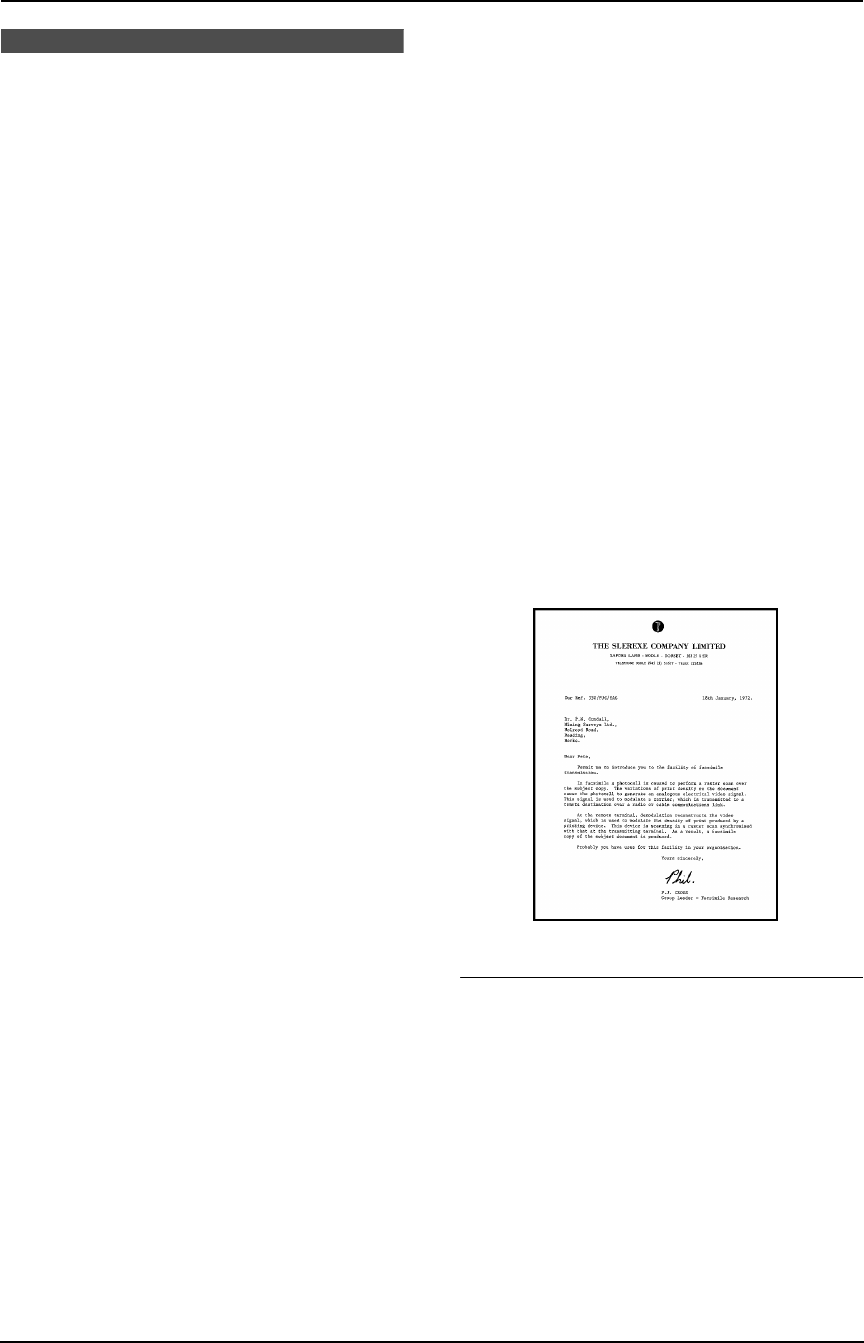
13. General Information
107
Specifications
13.2 Specifications
13.2.1 Base unit
■ Applicable lines:
Public Switched Telephone Network
■ Document size:
Max. 216 mm in width, Max. 600 mm in length
■ Effective scanning width:
208 mm
■ Effective printing width:
A4: 202 mm
■ Transmission time
*1
:
Approx. 8 s/page (ECM-MMR)
*2
■ Scanning density:
Horizontal: 8 pels/mm
Vertical: 3.85 lines/mm – in standard resolution,
7.7 lines/mm – in fine/photo resolution,
15.4 lines/mm – in super fine resolution
■ Photo resolution:
64-level
■ Scanner type:
Contact Image Sensor
■ Printer type:
Thermal Transfer on plain paper
■ Data compression system:
Modified Huffman (MH), Modified READ (MR),
Modified Modified READ (MMR)
■ Modem speed:
14,400 / 12,000 / 9,600 / 7,200 / 4,800 / 2,400
bps; Automatic Fallback
■ Operating environment:
5 °C – 35 °C, 20 % – 80 % RH (Relative
Humidity)
■ Dimensions:
Approx. height 139 mm × width 331 mm × depth
238 mm
■ Mass (Weight):
Approx. 3.1 kg
■ Power consumption:
Standby: Approx. 4.5 W
Transmission: Approx. 15 W
Reception: Approx. 35 W (When receiving a 20
% black document)
Copy: Approx. 40 W (When copying a 20 % black
document)
Maximum: Approx. 130 W (When copying a 100
% black document)
■ Power supply:
220 V – 240 V AC, 50/60 Hz
■ Fax memory capacity
*3
:
Approx. 25 pages of memory transmission
Approx. 30 pages of memory reception
(Based on the ITU-T No. 1 Test Chart in standard
resolution, without using the Error Correction
Mode.)
■ Voice memory capacity
*4
:
Approx. 28 minutes of recording time including
greeting messages
*1 Transmission speed depends upon the
contents of the pages, resolution, telephone
line conditions and capability of the other
party’s machine.
*2 Transmission speed is based upon the ITU-T
No. 1 Test Chart. If the capability of the other
party’s machine is inferior to your unit, the
transmission time may be longer.
*3 If an error occurs during fax reception, such
as a paper jam or if the recording paper runs
out, the fax and subsequent faxes will be
retained in memory.
*4 Recording time may be reduced by the
calling party’s background noise.
ITU-T No. 1 Test Chart
Recording paper specifications
Recording paper size: A4: 210 mm × 297 mm
Recording paper weight: 64 g/m
2
to 80 g/m
2
Note for recording paper:
L Do not use the following types of paper:
– Paper with a cotton and/or fibre content
that is over 20 %, such as letterhead
paper or paper used for resumes
– Extremely smooth or shiny paper, or
paper that is highly textured
– Coated, damaged or wrinkled paper
– Paper with foreign objects attached, such
as tabs or staples
– Paper which has dust, lint or oil stains
FC243AL-PFQX2096ZA-en.book Page 107 Thursday, September 30, 2004 3:37 PM


















